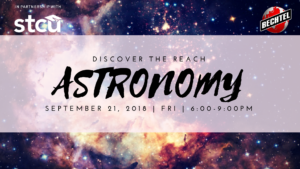Our clear autumn evenings in Eastern Washington
present a great opportunity to enjoy views of the moon, stars, and planets. Light pollution is reduced if you’re willing to drive a little bit away from town, but even in our urban yards we can see some amazing sights. Members of the Tri-City Astronomy Club set up their telescopes in the REACH Museum parking lot once a month and welcome the public to look through the eyepieces at our moon, planetary neighbors, and even some more distant objects.
This is a great chance to see with your own eyes
what our astronauts and spacecraft have been sent out to explore: craters of the moon, rings of Saturn, even the moons of Jupiter. Club members are willing to talk about the equipment they use if you’re interested in getting your own scope, and they also enjoy showing visitors of all ages how to find their way around the night sky. Check out their website www.tricityastronomyclub.org and Facebook page for future viewing dates and meeting times.
 On Friday, September 21 the REACH Museum hosts Astronomy Night
On Friday, September 21 the REACH Museum hosts Astronomy Night
with the Tri-City Astronomy Club and LIGO Hanford. Telescopes will be set up outside, weather permitting, allowing views of the nearly-full moon as well as Jupiter, Mars, and Saturn. Venus will be at its brightest and very low to the horizon after sunset. It’s the brightest object in the night sky, aside from the moon. A view through a telescope reveals that Venus has phases like the moon; on Friday you may be able to see that it’s a crescent! And there will be plenty of indoor activities as well on the 21st, so don’t worry if any clouds start rolling in. The museum opens at 6:00 pm for this event, and if you want to come a little early, Swampy’s BBQ truck will be ready to sell dinner by 5:30 pm.
Exploring the night sky can get you thinking about time and distance in a new way
When you’re seeing something so far away from earth, you are actually looking back in time. Light from the moon takes only 1.26 seconds to reach our eyes, but light from the sun takes 8 minutes and 20 seconds. Light from the North Star, Polaris, takes 433.8 years to reach us, so we’re seeing what that star looked like in the year 1585 AD. And if you find the Andromeda Galaxy, the farthest object that we can see with the naked eye, you’re looking back in time 2.5 million years! Who needs a time machine?

